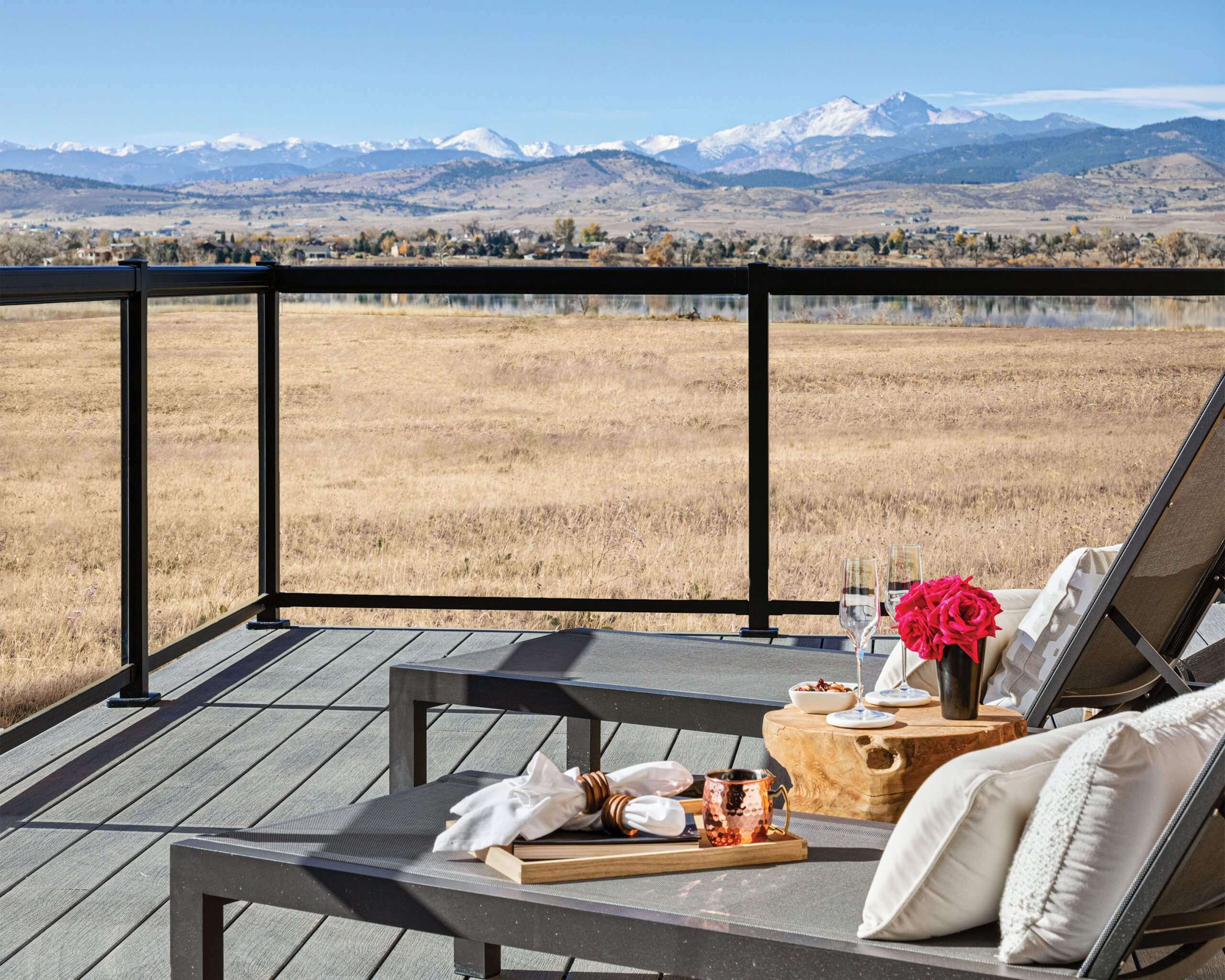Much of that, experts suggest, may be due to the backlog of jobs and a late start to the season due to weather. A backlog some say has railing contractors booked well into the summer.
Weather delayed some projects into the spring but with warmer days came an expected pickup in business, noted Rick Churchill, National Sales Manager, Liv Building Products.
It is a sentiment shared by others in the industry: “Retailers might be seeing a slower start, but that’s because jobs haven’t closed yet” says Andrew Pantelides, Executive Vice President of Marketing and Business Development at Regal Ideas Inc.
As a member of the Board of Directors of NADRA (the North American Deck and Railing Association), Pantelides adds that in mid-May, “We’re seeing installers that have jobs posted all the way out to August.”
He says that based on data from his company’s network of certified DeckStars he’s forecasting a reset to 2019-2020 levels. But Regal has been working closely with dealers and installers to take advantage of trends that lead to more railing jobs and sales.
NEW OPPORTUNITIES THROUGH DECK INSPECTION
A big opportunity Pantelides says contractors should take advantage of is becoming certified deck inspectors. Based on average deck lifecycles, he says 2024 should see a spike in decks reaching end-of-life, or repair time.
Already a popular approach in the U.S, while the fee for inspection might be nominal (say $200-300), it provides an apt time to educate homeowners on safety, and a deck resurfacing job can be a great time to casually introduce a functional and aesthetically pleasing new railing upgrade as a small upsell.
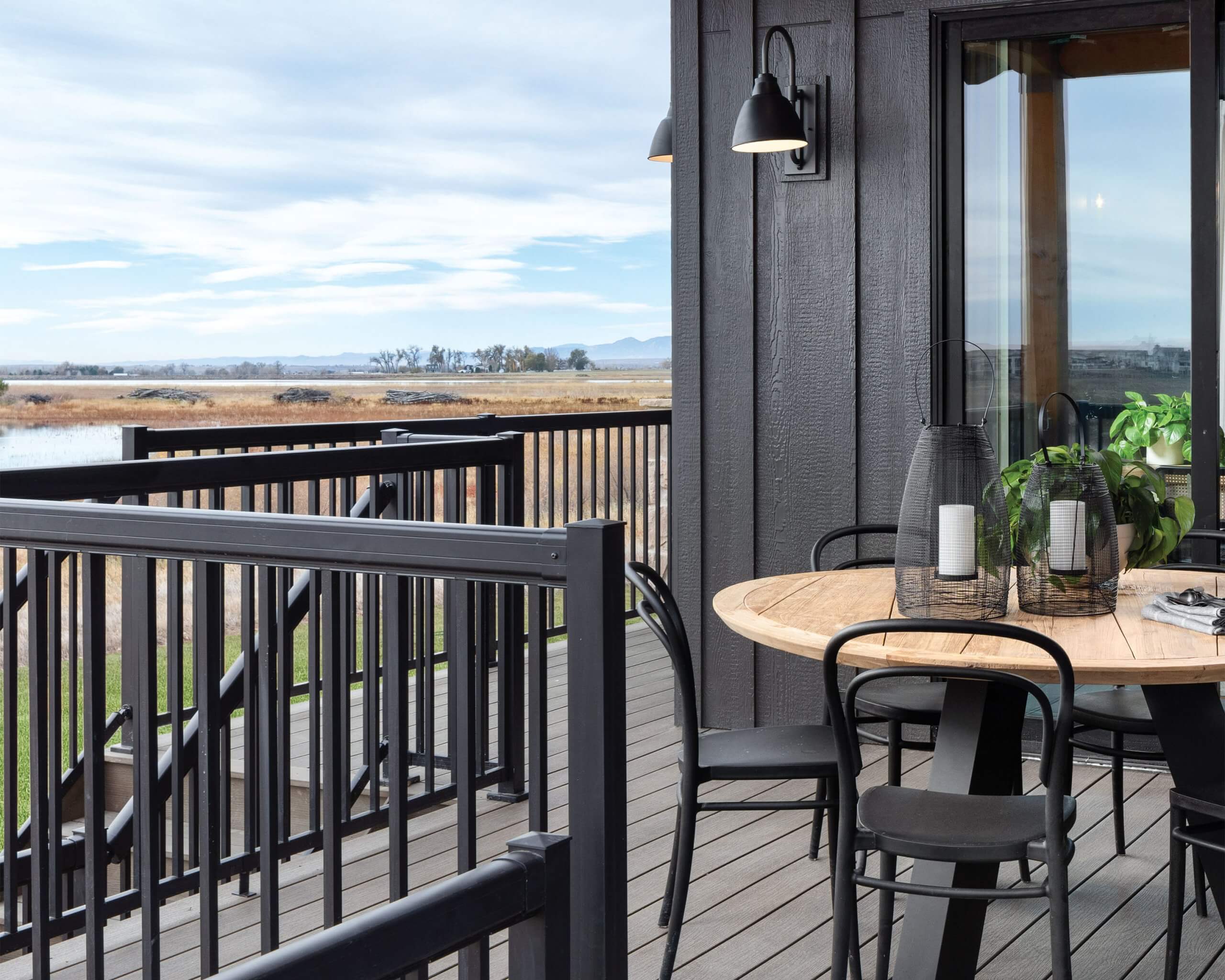
Photo courtesy of Regal Ideas
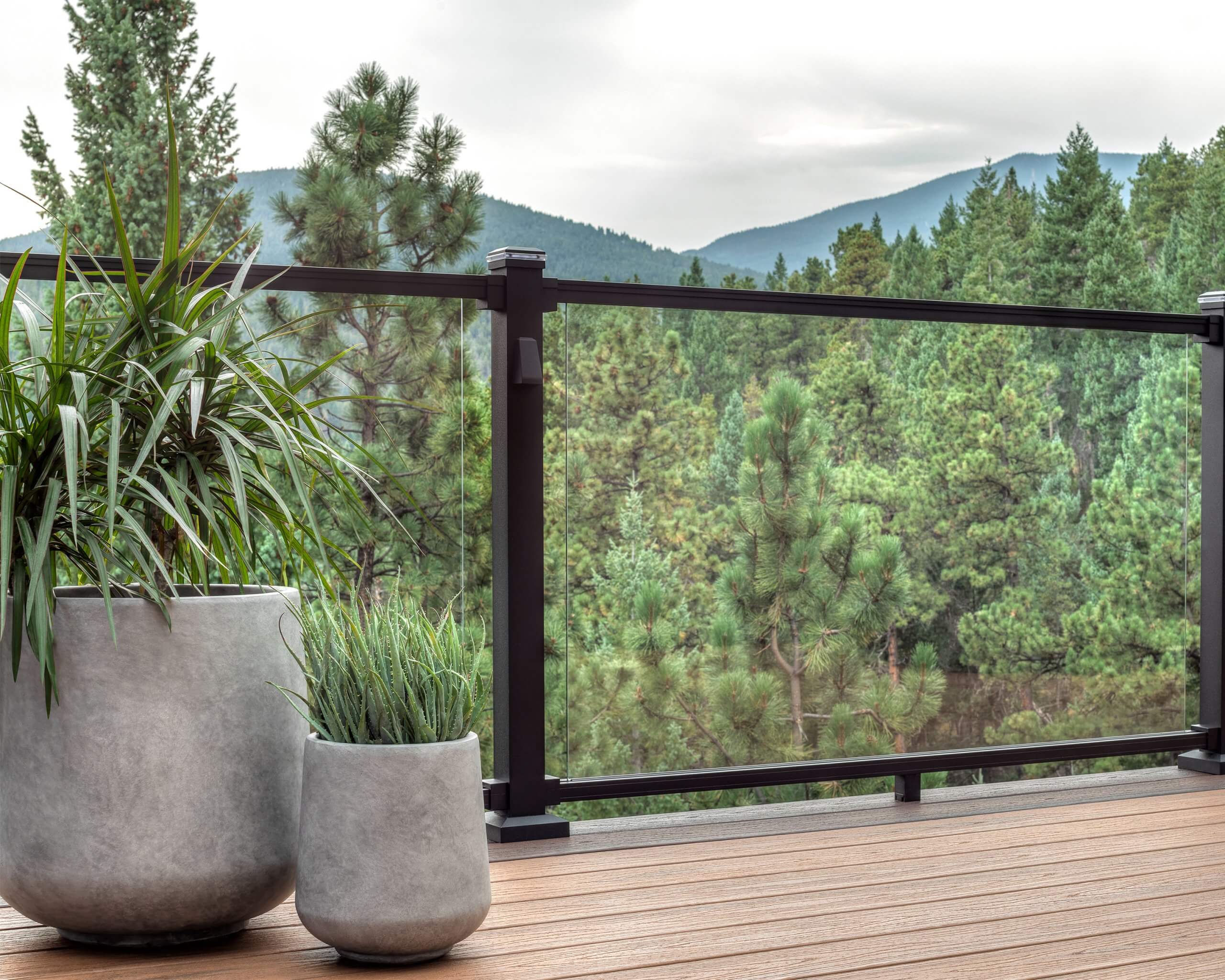
Photo courtesy of Trex
ALUMINUM AND COMPOSITE RAILINGS
For homeowners looking for low maintenance, aluminum is still the popular choice over composite, even on composite decking, says Shawn Pilon, marketing manager at Nicholson and Cates, distributor of Trex decking and railings.
“We continue to see a move toward aluminum rail systems to go with composite decking,” he says. “Aluminum rail seems to be the bigger item as opposed to a composite rail or a wooden rail.”
In some cases, he’s seeing a mix of composite posts to match the deck and aluminum slats, such as Trex Signature series. In addition to affordability and low maintenance, aluminum baluster profiles are typically smaller than composite providing more of the much coveted outdoor view.
“Aluminum tends to be, by and large the most prominent material in the market, but we have seen strong sales in composite railing as well,” says Matt Lipskey, national product manager for decking and railing products at Gillfor Distribution Inc., distributor of TimberTech deck and railing products.
He says price and availability are factors, but another driver for composite sales is a homeowner’s desire to differentiate themselves or for brand cohesion (when building a TimberTech deck, for example). “Also, there’s a perception that while aluminum lasts a long time, composites last longer.”
Aluminum offers a sleeker profile, he adds, whereas composites “beefier” posts are ideal for a heritage home style. Carlos Pacheco, president of Nuvo Iron, says thanks to its durability and ease of installation, he predicts aluminum to continue to dominate the landscape in the railing category for quite some time.
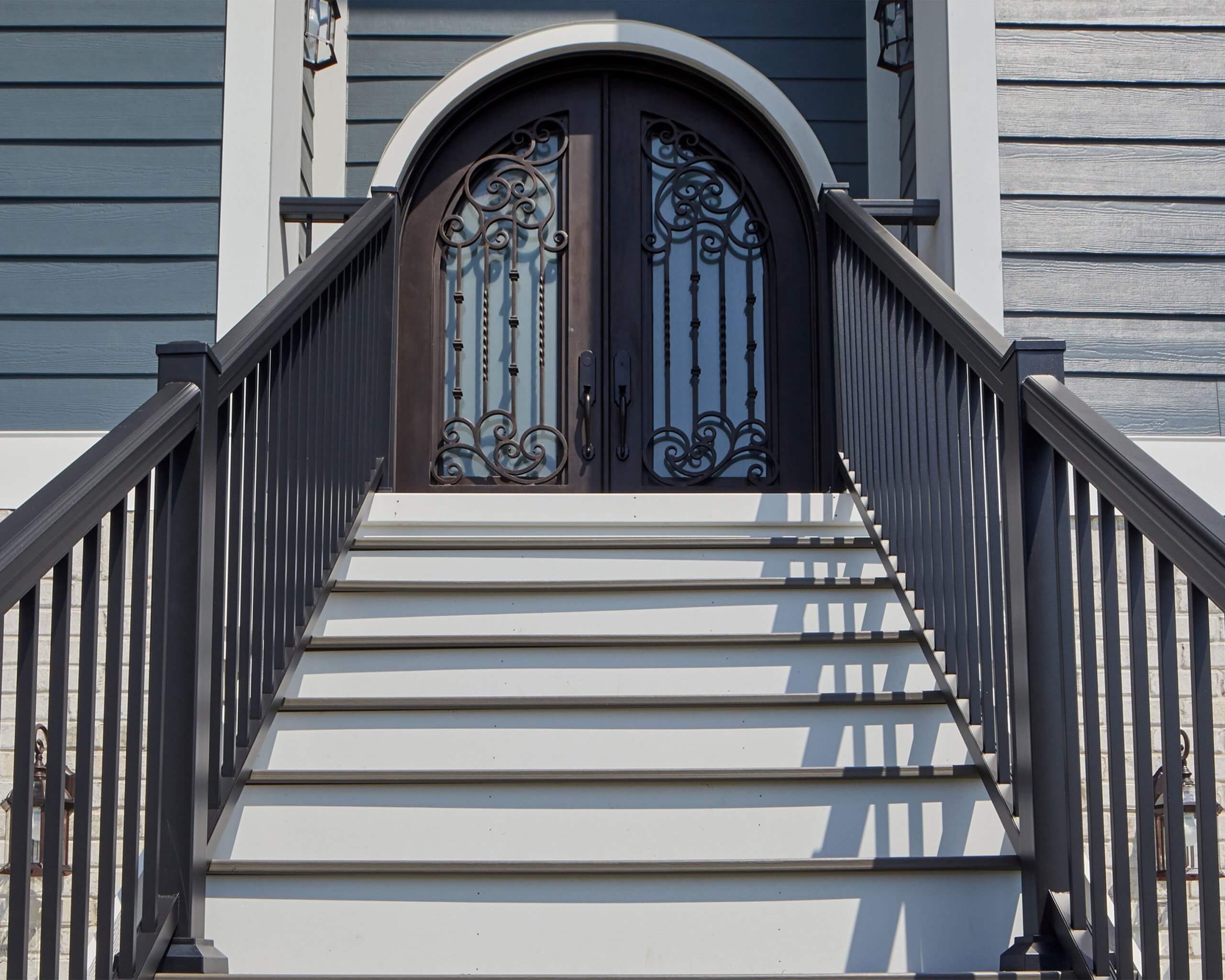
Photo courtesy of Gillfor
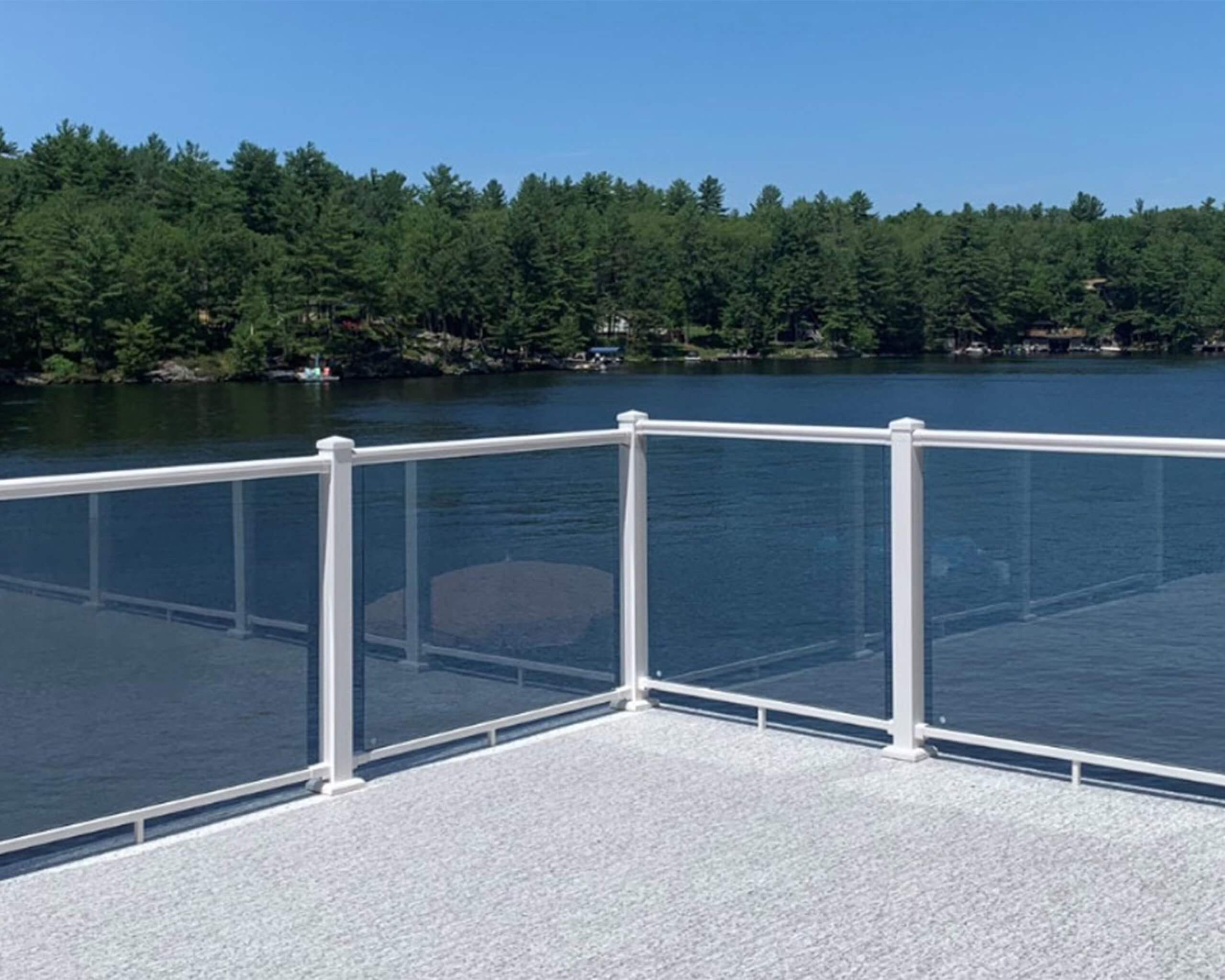
Photo courtesy of Nuvo Iron
Like in past years, many homeowners are looking for a better view of their outdoor living space, with glass continuing its steady uptick.
“Glass is still a pretty top trender,” Pacheco says. “It doesn’t fit every budget but it’s definitely a top trend for high-end installs. And there’s been some competitive pricing in the markets that allows a lot more people to afford it.”
It’s all about that unobstructed view of the yard, lake or outdoors that homeowners crave. “More and more homeowners want to enjoy the backyard without an obstructed view like a top rail,” Churchill says.
But glass isn’t the only way to have a great view of the yard. “If we look at the market, the two strong trends we see are an increase in glass railings and an increase in cable railing systems,” says Rob Mitchell, president and CEO of Vista Railing Systems Inc.
Both systems have their appeal and applications. “Cable has the advantage that when you’re near water you don’t get morning fog on your glass while you’re sitting having your coffee,” Mitchell says. “Glass can be a little more cost-effective than stainless steel.”
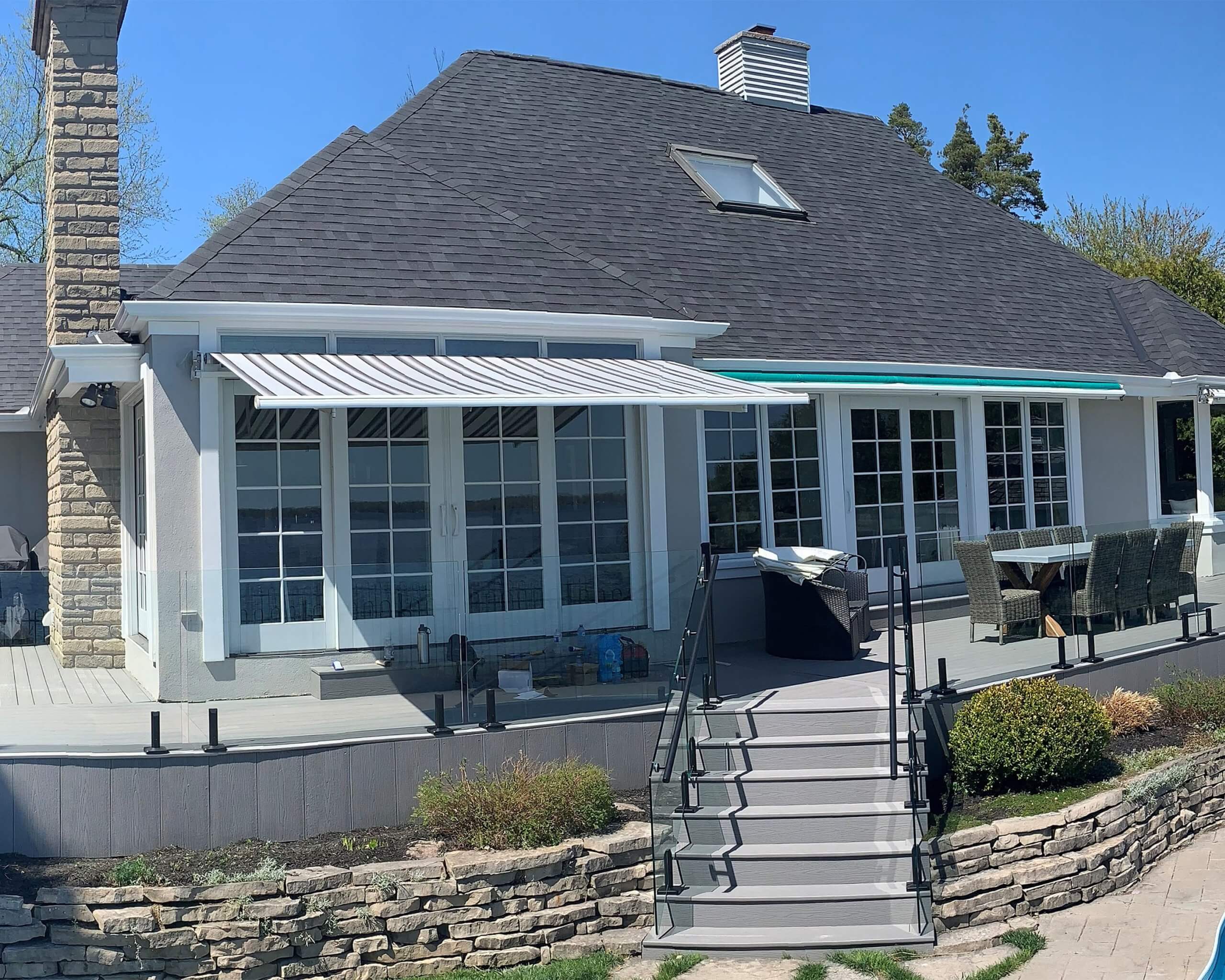
Photo courtesy of Liv Building Products
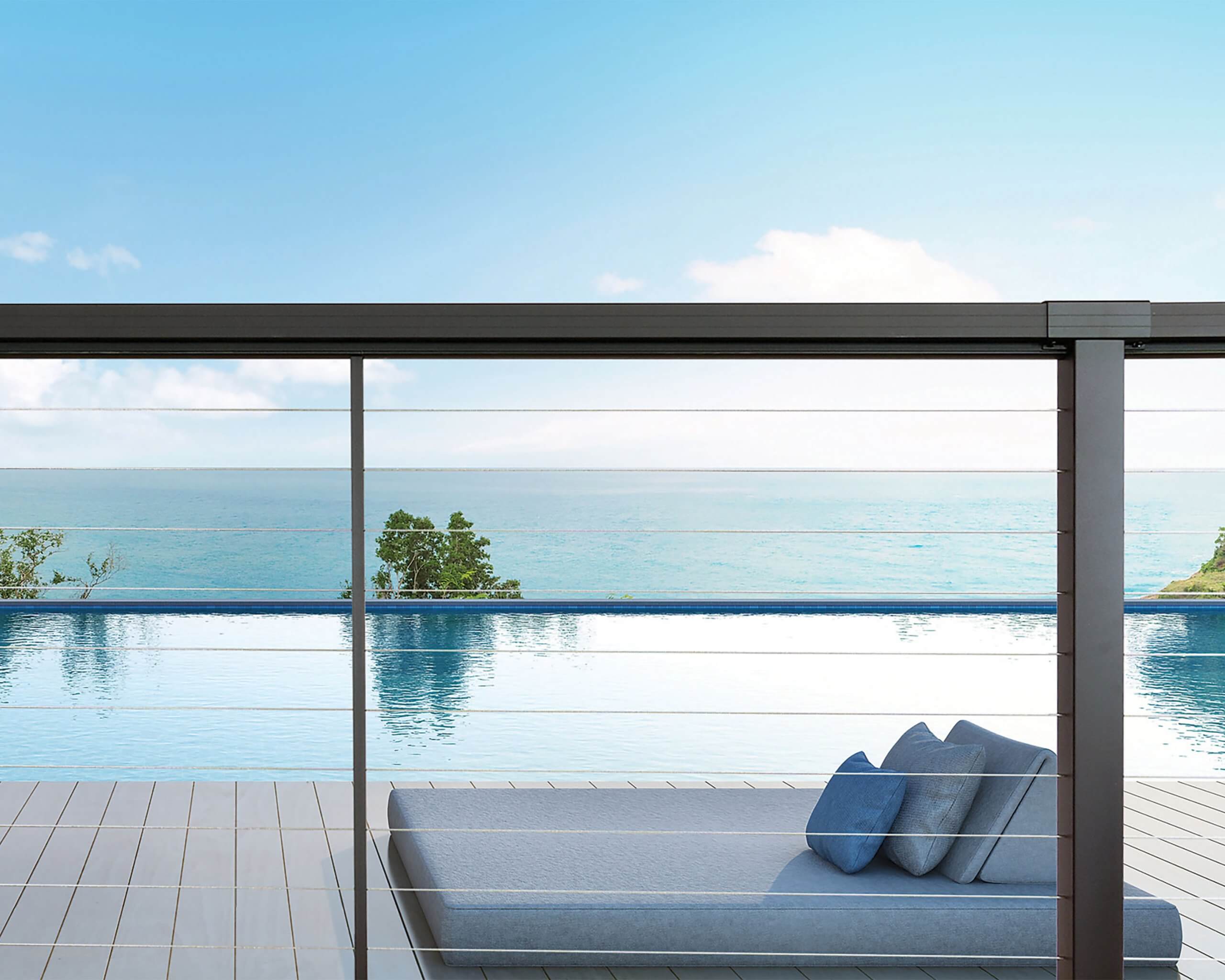
Photo courtesy of Vista Railing Systems

Photo courtesy of Vista Railing Systems
He adds that InvisiRail from Liv BP “offers unique post styles and frameless glass for all jobs. Railings offer an unobstructed view and are all engineered to exceed building code requirements.”
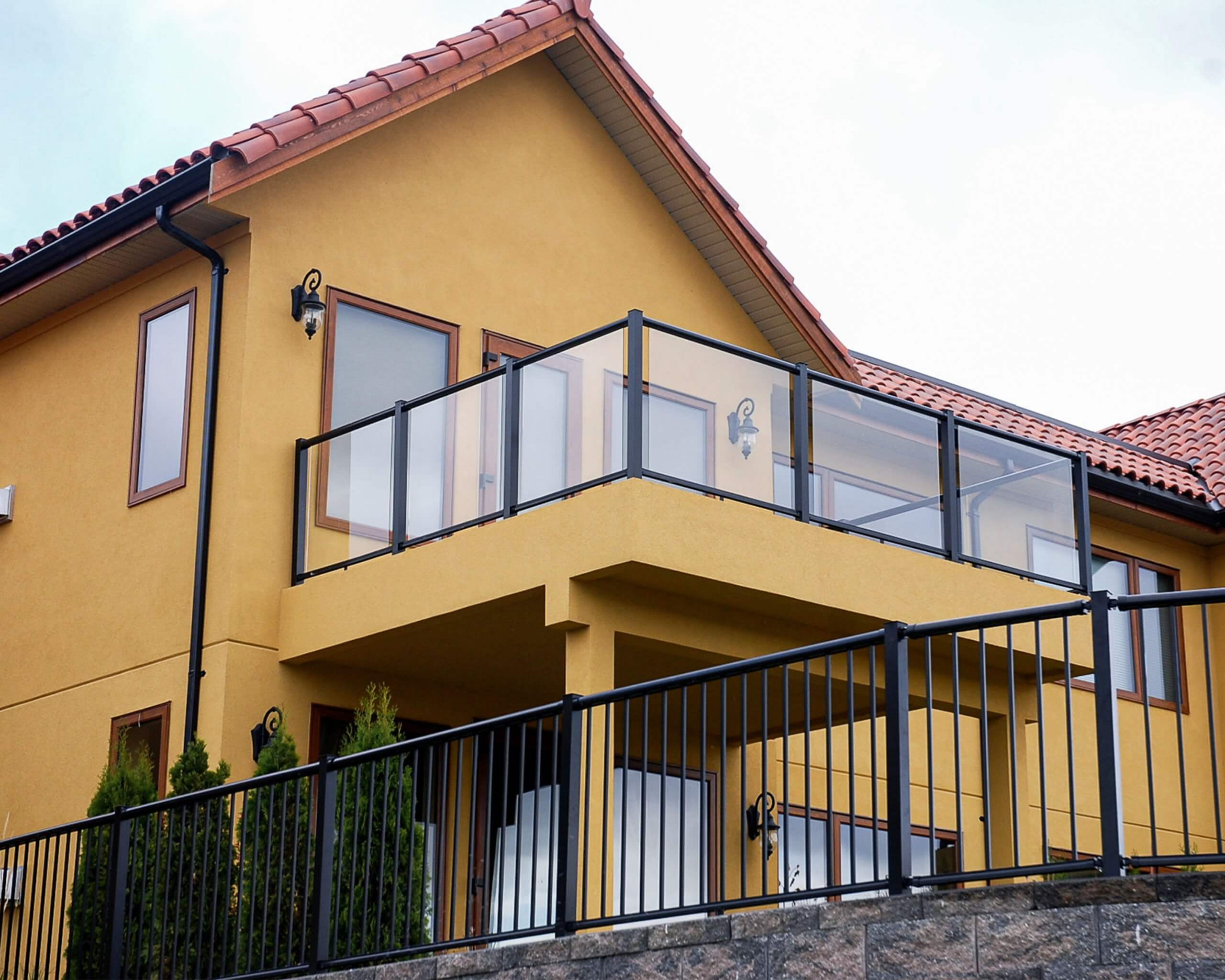
Photo courtesy of Century Aluminum Railings/CanWel
CHANGING CODES FOR SAFETY GUARDS
Shifting building codes in some provinces around guardrails are driving the development of new railing products, especially in the glass space, notes Ken Scott, general sales manager for Century Aluminum Railings at CenDek Railings Group, distributed by CanWel Building Materials Group.
In some provinces, 10mm glass railings like Century Railing’s Scenic series are no longer code compliant as a guardrail. In these provinces, the building code wants edge protection on the glass and secondary fall protection that meets load requirements.
To meet this need, Century has come up with a new design as part of its Scenic glass railing system that uses an aluminum U-cap to provide secondary fall protection and edge protection to prevent potential breakage. The innovative new Scenic system is expected in the summer of 2023 and will provide complete code compliance.
Pilon says he’s seeing an increased demand for styles of railing from homeowners that don’t meet Canadian building codes for guardrails, pointing to the example of rod railing systems that don’t meet climbability restrictions. The Internet and North America-wide brochures are inspiring some homeowners to want systems that aren’t appropriate as guards in Canada.
The National Building Code generally considers a guard required anywhere there would be a 24” drop. The 2015 NBC changed climbability restrictions on guards, requiring them for levels above 4.2 meters, but not all jurisdictions (like Ontario) have adopted this, with some still requiring restrictions on all guardrails. Of course, even municipalities can have different codes, and Pilon reminds contractors to check with local municipalities on requirements first.
Pacheco urges not just contractors to do their homework, but homeowners as well. “Ask the pertinent questions. The last thing you need after doing your deck is to have the inspector tell you to take it down.”
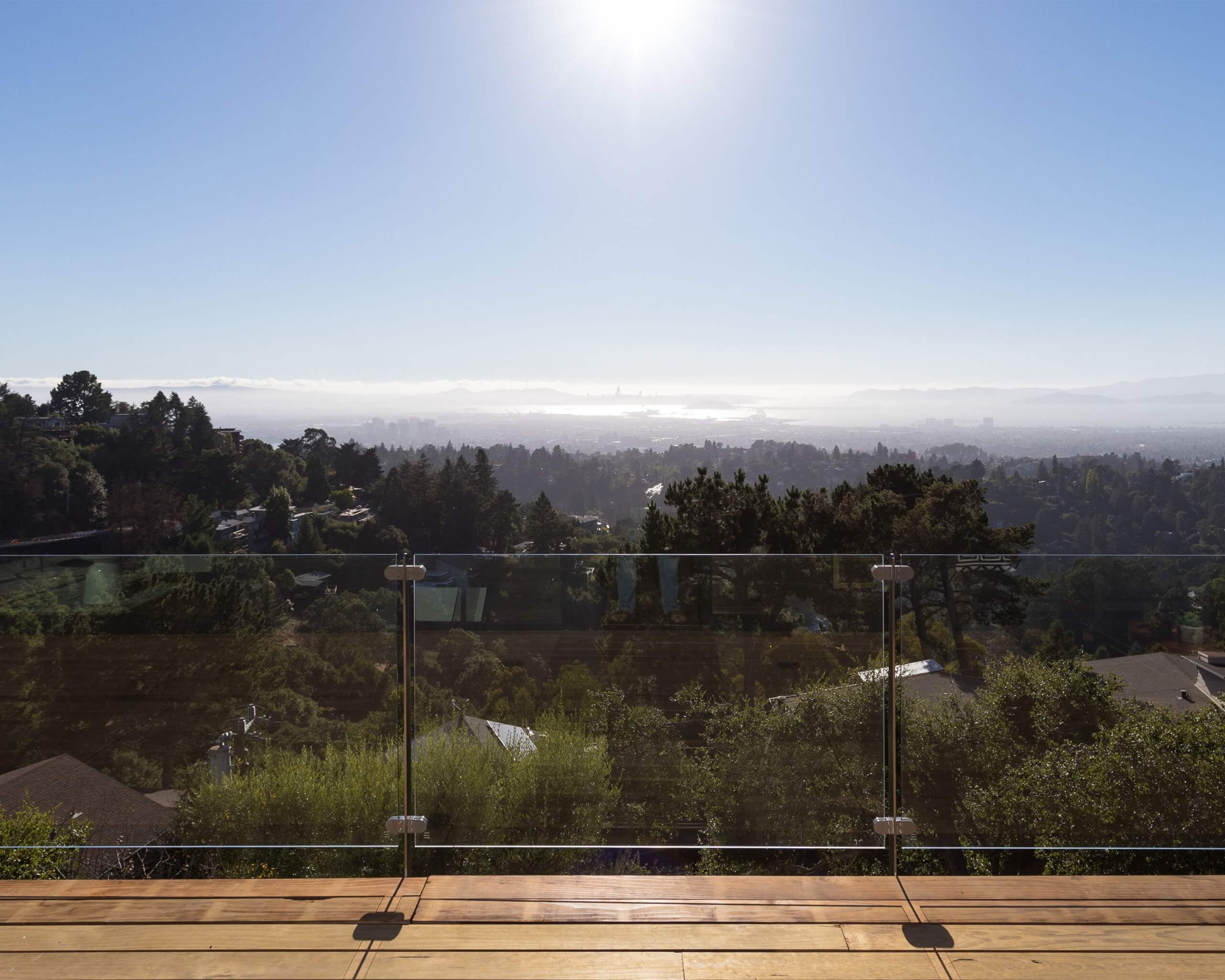
Photo courtesy of Liv Building Products
Along with the functionality of preventing falls, aesthetics and form are playing a part in homeowner decisions.
From a style perspective, picket railing systems and textured black have “trended up” over the year says Scott. In fact, he suggests stronger picket railing sales than glass, which could be due to price as well as aesthetics.
In terms of colours, black is still tops. “People are getting away from the whites and bronzes and going with a simple black colour, because it gives you a nice accent.” After all, like a black dress or black tie, the colour goes with everything. He adds, “Earthtones are starting to pick up a bit more, and we’re getting more custom colour requests that are more of an earth tone.”
Rail lighting is a constant trend, Pantelides says, such as the LED systems for Regal’s aluminum picket and CrystalRail tempered glass systems. With the demand for LED lighting Regal has released an accent lighting system, he says.
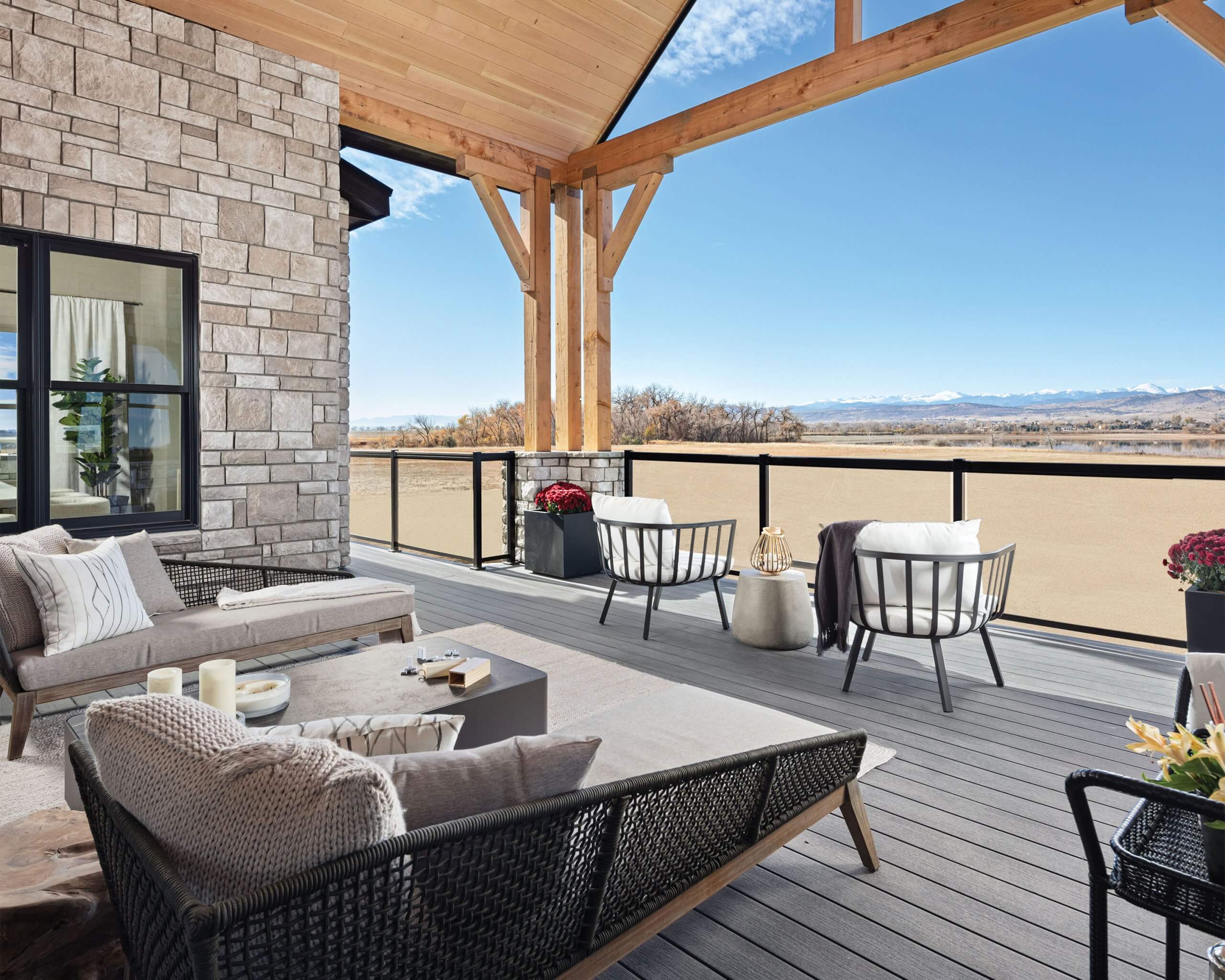
Photo courtesy of Regal Ideas
Capitalizing on the ongoing growth in interest in “the illumination of the outdoor space,” Nuvo Iron has recently launched low-voltage solar-powered lighting options for fencing and railings that Pacheco says are more innovative than what homeowners typically find in the market.
“We’ve been watching this trend for several years and people are looking for more than just a candle. The spark sort of happened two years ago, and I think in 2022 and 2023 there’ll be quite an increase in our presence in the market.”
Contractors can probably chalk the increased interest in railing design and aesthetics to two things: homeowners spending more time in their yards and getting more and more inspiration from TV and the Internet.
“Due to the whole HGTV effect,” Scott says, “people are spending time on design and rather than just saying ‘I want to put a railing up,’ saying ‘I want to make a [design] decision on that.’” —
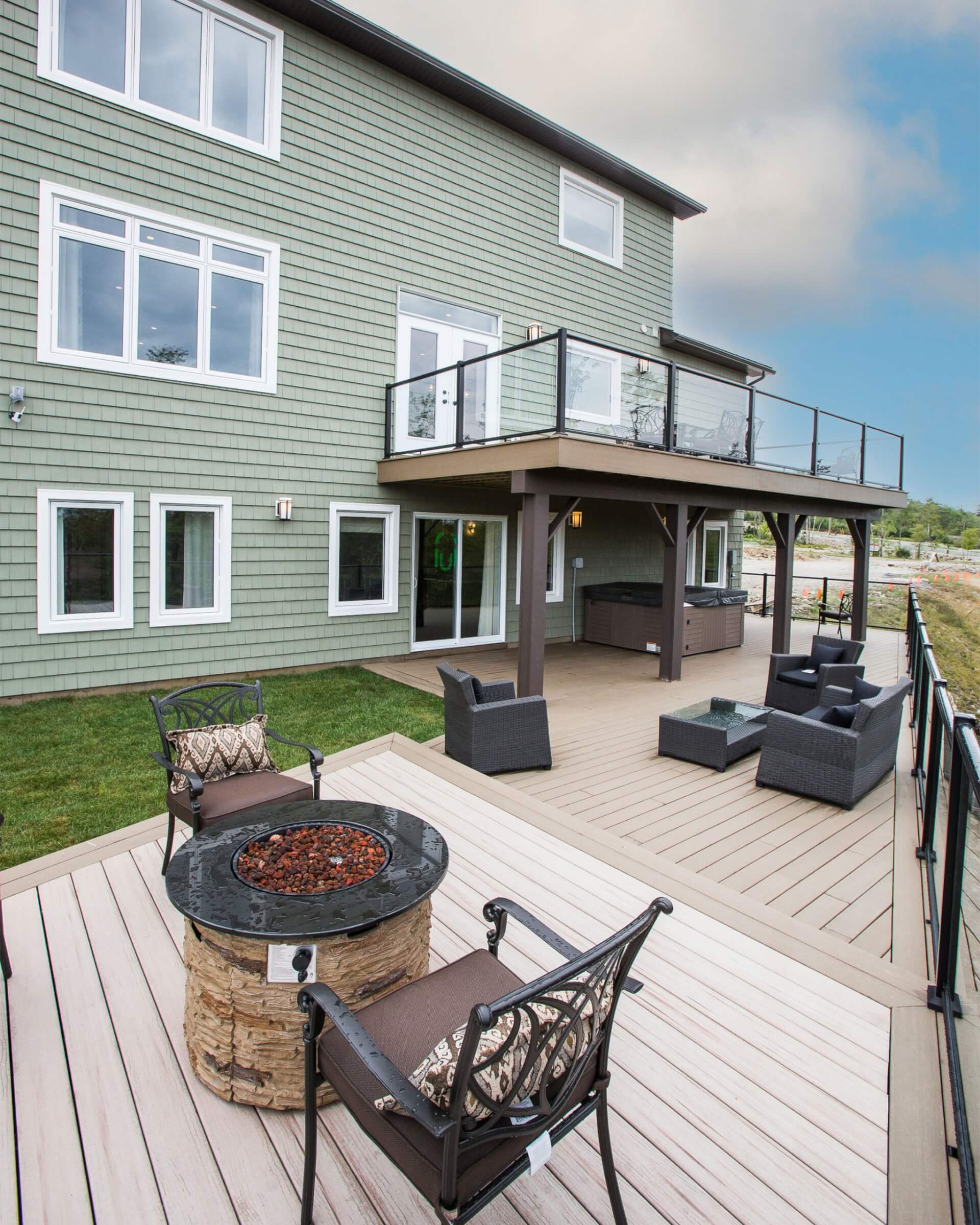
Photo courtesy of Century Aluminum Railings/CanWel
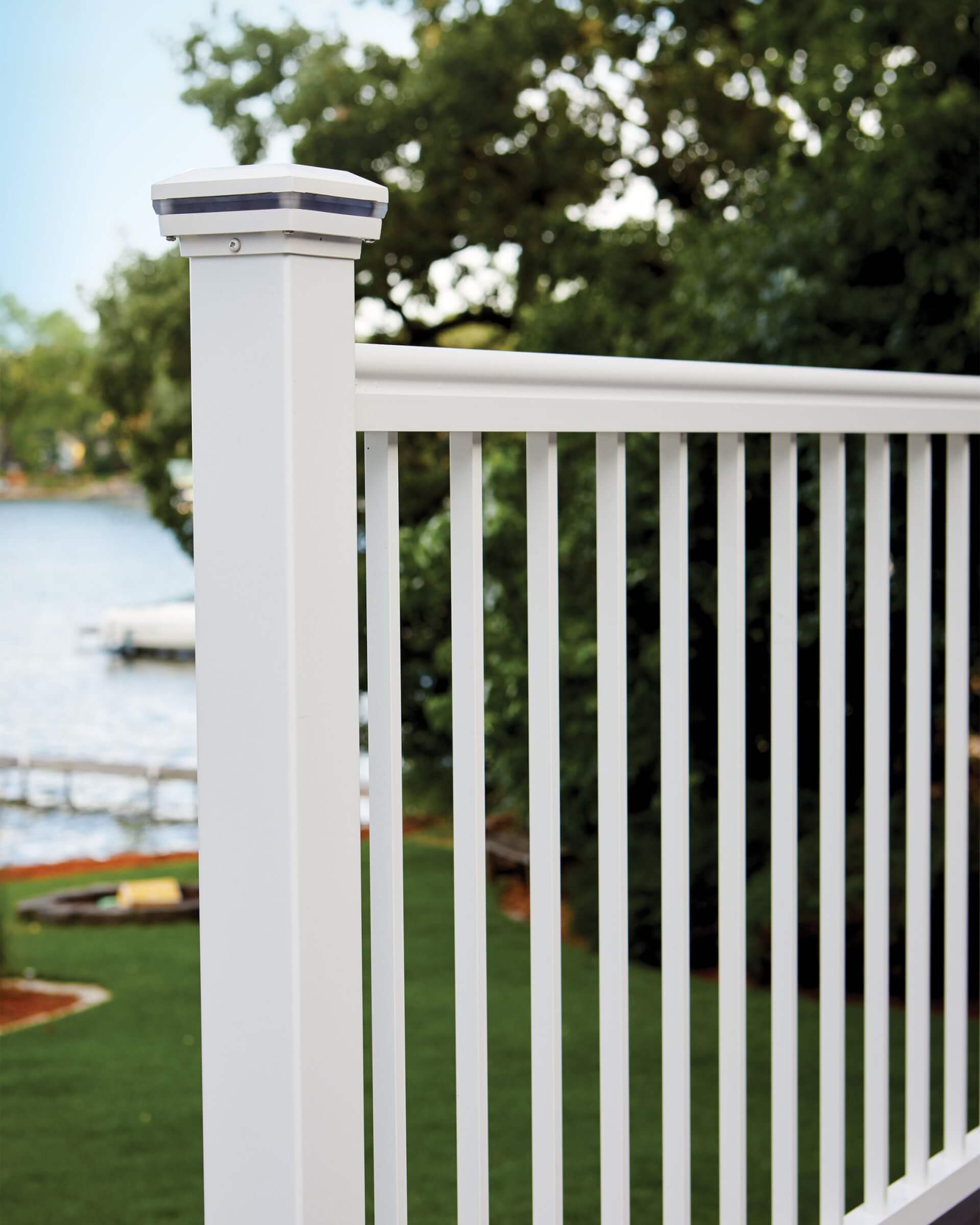
Photo courtesy of Gillfor
